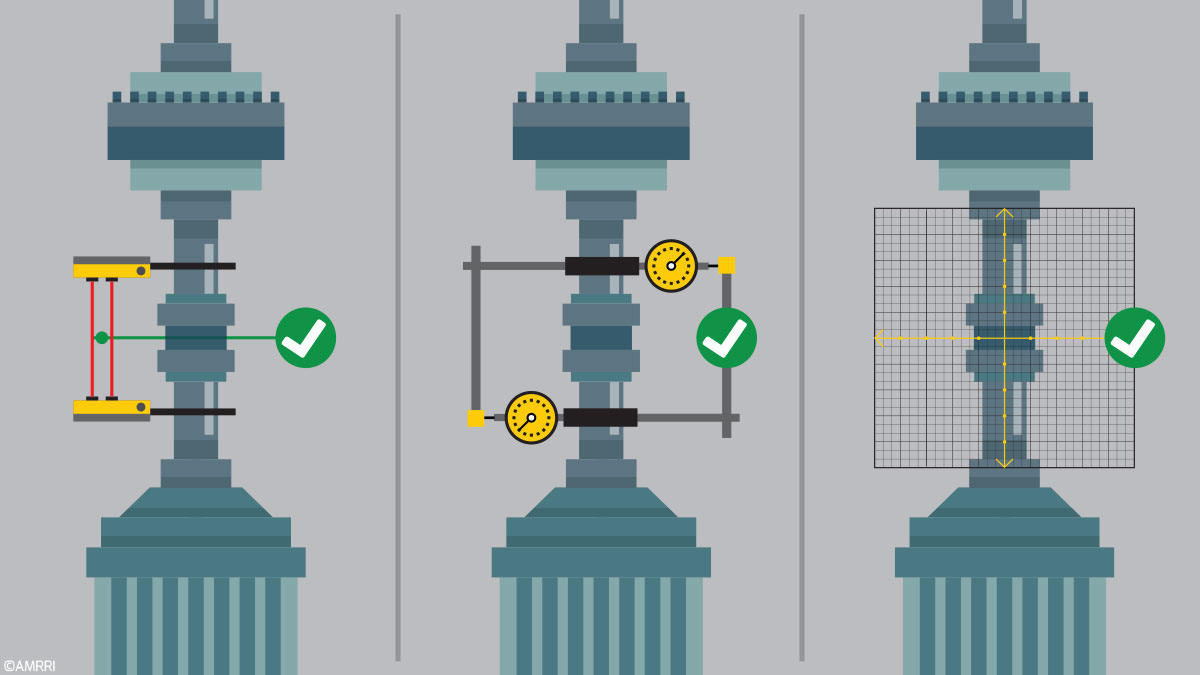The Precision Lubrication team recently spoke with Ian McKinnon about precise alignment. Ian is a pioneer in the maintenance field, a passionate instructor, and a founding principal of Reliability Solutions, LP.
Why don’t you use lasers to demonstrate alignments in your training courses?
We are trying to show the importance of reinforcing the connectivity between reverse technologies and current laser systems. The device being used doesn’t matter. It would be best if you had a greater understanding of the equipment being utilized. This is the best connectivity to reverse methodologies.
It is not about the device a technician uses in the field. It is about precision. There has always been this idea that you need a particular device to create that precision alignment. The device doesn’t make the equipment alignment precise, so who cares what you use? You need to know precision and the tolerances provided today as that starting point. Understanding angular and offset alignment is critical for the technician to determine how close you need to be based on actual variables.
What do you focus on when training on precise alignment?
We discuss many types of alignment methods along with the history behind each technique. These methods include the “calibrated” eyeball, Rim and Face, Cross Dial, Reverse Dial, and laser systems. We do talking points on each way you can do an alignment, and we talk about the potential errors of each method. We also address dimensional accuracy, repeatability, and the need to understand where the technician is in the alignment process. When it comes to lasers, our instructors discuss how each system, regardless of the manufacturer (laser), is built on the principles and fundamentals of a reverse methodology system. We focus on what is happening inside that laser to understand the precise alignment process better.
Does learning a reverse methodology system hinder technicians in the field that use lasers?
There are many opportunities to put a technician in a frame of mind that they need to be more comfortable using a laser. The laser could provide information that, as a technician, they may need help understanding. A technician could become confused with the readings provided or, in the worst-case scenario, lose trust in the equipment and find other alternatives.
A technician needs to understand how that laser works to keep this from happening.
They need to be familiar with and understand what reverse methodology of alignment really and truly is. The more familiar a technician is with reverse methodology, the more they understand the laser readings.
Could you explain why you use Reverse Dial Indicators in your training?
We use Reverse Dial Indicators in our courses to promote connectivity from the technician’s eyeball (seeing a gauge) to their brain (cerebral connection) to develop that rooted understanding of precise alignment. That is the best connectivity we have today, bar none! Our students in the classroom understand what alignment is and the best way to achieve that alignment when they enter their facilities. Our teaching method in the classroom brings that connectivity to errors, identifying these errors and achieving excellence in the field.
Do you use Reverse Dial Indicators to show you don’t need a laser in the field?
Not at all! In our training, we promote laser usage. We want people to use lasers. You need the speed and the accuracy, and you need that instantaneous readout from that laser. We could use lasers in our training, but we do not. Using Reverse Dial Indicators shows the accuracy, respectability, correction of fixture twist, and proper removal of pre-alignment errors, the same as with a laser. But here is the kicker, using our methodology, the student gets to see with their eyes and hands how fast it can change just by watching the face of the dial as they rotate the shaft. That technician will see and ultimately sense the importance of being extremely cautious with a digital instrument where no visual recognition is available to them.
What’s the importance of plotting using a sheet of graph paper?
Why plot? Excellent question! The direct reason we conduct plotting in our training is to provide that visual stimulus to the brain where the “shaft-to-shaft” positions are so that a greater degree of accuracy and the decision of the next step can be achieved.
The importance of plotting is simple. The accuracy of any alignment is about ensuring that we maintain, in a dynamic operation, the most minor radial internal clearance of any part of the machine assembly. Thus, reducing the mechanical and parasitic frictional load.
The laser manufacturers fully understand the need for these plots and provide them as an option in their different laser models. These models are expensive, so most companies don’t get them. If plotting is not part of the laser option, you can grab that three-cent piece of graph paper and plot your positions.
Misalignment only happens four ways, and all four can be plotted. It is either misaligned where the feet must go up, down, left, or right to correct the misalignment, and it can be seen visually on that inexpensive piece of graph paper.
With a laser setup, the move/mode function provides the required movement at the inboard or outboard feet of the “sight” or “movable” machine. We teach our students to plot this, hence, if the front positions are known, a single misalignment line can be drawn, and the relative positions from shaft to shaft can be visually seen.
Why would we want to graph every misalignment? Is there a time or monetary constraint?
I will answer both of these questions together. Plotting is inexpensive and does take a few minutes out of the alignment process. But it truly depends on what the company is willing to do for the technician and how comfortable the technician is with plotting.
The key to graphing each misalignment allows for the technician to:
- Know where they started originally
- Know where they are after every move
- Know the determination of a final and precise position
By graphing, this option can cause a purchase change of many thousands of dollars; for some companies, it may not be available for the technician. In other words, a financial alternative. Therefore, understanding how the reverse system works and knowing how to plot your laser or a dial indicator is paramount to improving reliability.
Why don’t you use lasers when training on precise alignment?
We do not use lasers during training for a few reasons. One reason is we are simply trying to create a connection with the student’s cerebral stimulus. You know, that “Ah-ha” moment when they arrive at the excitement of discovery with their own thoughts. You cannot do that with a laser.
We also want to ensure that the student sees “that’s how it works” and starts building that mental picture so that when they return to their facility and grab the laser to do an alignment, they understand what is happening during the process.
It is all about the technician’s comfort zone. We want them to use lasers; we need them to use lasers. But that technician better have the knowledge and the know-how to use that laser. It is not about pushing the button. It is about understanding what alignment is.
Are there any drawbacks to using a laser in the field?
There are drawbacks to using any alignment tool in the field, but lasers have some flaws. There are lasers out there that are affected by the environment the technician is in. One example is lasers that don’t work well in bright sunlight, dusty areas, or won’t work at all in areas of the technician’s facility with a lot of moisture, condensation, or steam in the air.
If there is a lot of vibration from other machines in the area, a technician is aligning; this is a significant issue. The Laser measures in microns, and vibrations from other machines will cause that laser to move ever so slightly, but many times a second. In this case, the laser becomes overloaded with averages, giving false alignment readings. But you should know the limitations of the equipment. This allows the technician to conduct a precise alignment with the right tool – laser or a dial indicator.
Precise alignment principles are taught in the Reliability Solutions course: Essential Craft Skills (ECS) 1: Assembly and Installation.








